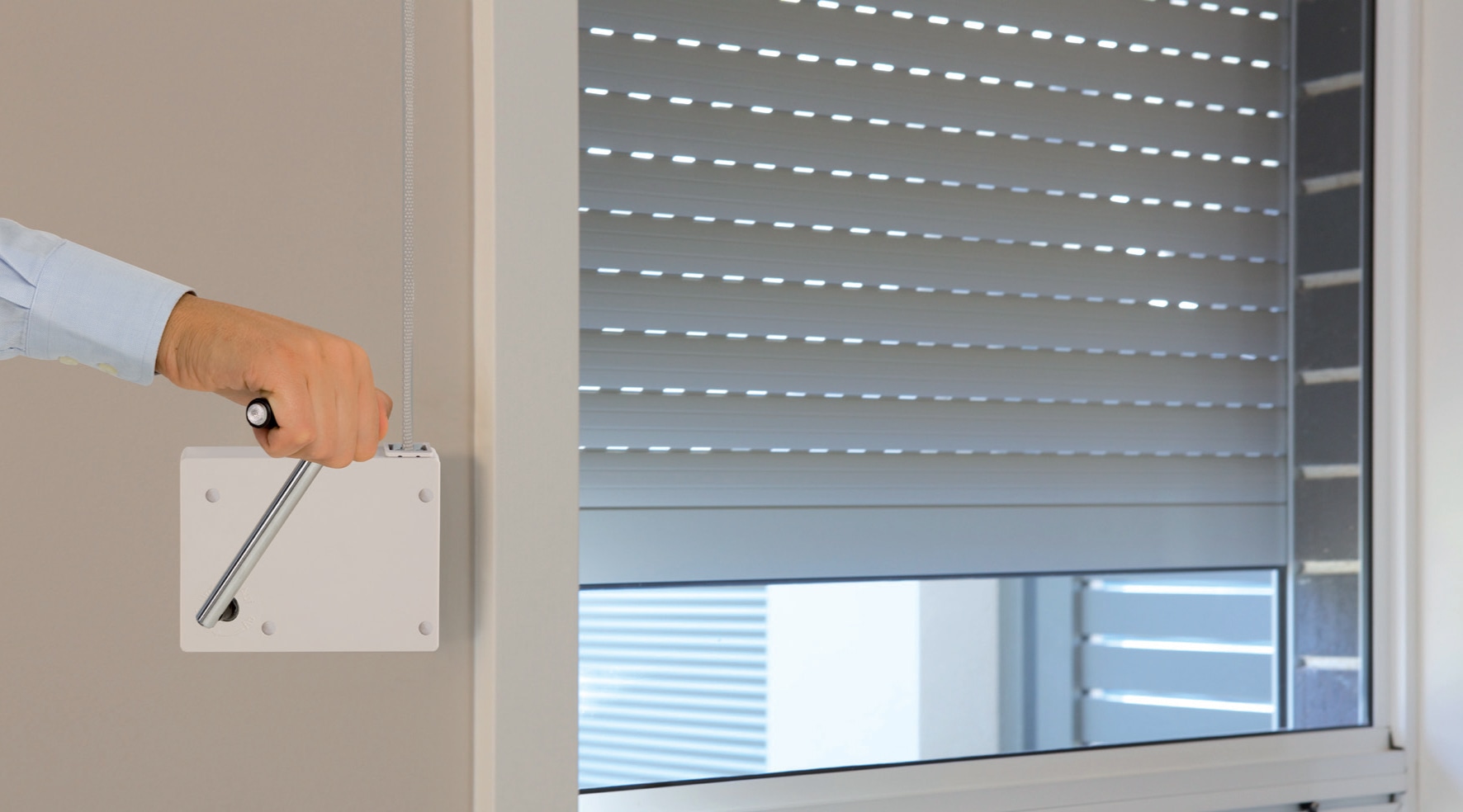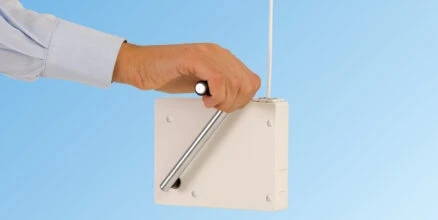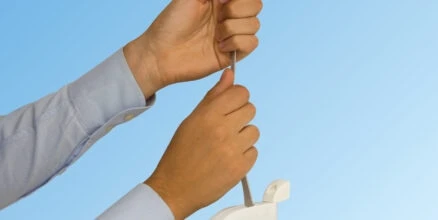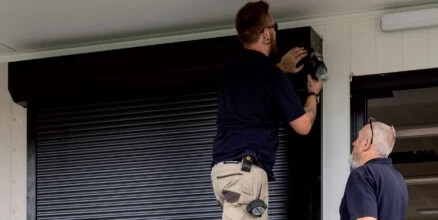Manual roller shutters offer your customers enhanced security, increased energy efficiency, light control and weather protection. They’re also a cost-effective alternative to motorised roller shutters. However, the key to keeping your manual roller shutters in peak condition for years to come is getting the installation process right, as any minor issue during this process can compromise the functionality of your roller shutters down the track.
At CW Products, your success is our success. Unlike other roller shutter and home automation suppliers, we don’t compete with you – we partner with you and support you. Backing you, helping to build your business and supporting your sales as if they were our own.
Because manual roller shutters are made from many components, there could be several reasons why your customer is struggling with their shutter. So how can you repair a manual shutter? Read on to find out.
How do manual roller shutters work?
Manual roller shutters operate by raising or lowering a curtain guided by vertical tracks or guides. To raise the curtain, it is rolled onto an axle within the small headbox or pelmet. This keeps the curtain safe and clean from debris, and provides for an aesthetic appearance. The axle can be driven by various means such as a winder mechanism or spring. To lower the curtain/roller shutter, the axle rotates in the opposite direction. When the curtain touches the bottom of the shutter, ground or window sill, the curtain will close the slat perforations that allow a small amount of light to pass before closing fully.
Our manual roller shutters can be operated in several ways, including a:
- Strap winder
- Cord winder
- Steel cable winder
- Strap coiler
- Cord Coiler
- Spring-loaded with a key lock
Roller shutter components
Understanding the different parts of a manual roller shutter will help you diagnose and repair any issues.
Curtain
The roller shutter curtain is made up of precision roll-formed or extruded interlocking aluminium profiles that roll up and down between the side guides.
Guide channels
The side guides are aluminium extrusions that sit on either side of the roller shutter. They hold the roller shutter curtain in place and allow it to run up and down.
Bottom bar
The bottom bar is an aluminium extrusion that interlocks on the bottom of the roller shutter curtain. It provides the curtain with added strength and neatly finishes the roller shutter curtain, improving its aesthetic appeal.
Side frames
Also known as end plates, the load-bearing side frames support the pelmet and internal roller shutter components – including the axle that the curtain rolls onto. These side frames should be secured to the building with appropriate fixings.
Pelmet
The canopy cover is often referred to as the hood or pelmet. The cover is made from durable aluminium and is designed to fold around the side frames and protect the curtain from the outside elements.
We always recommend installing a pelmet as it improves aesthetics and helps protect the internal components of the roller shutter, which improves the shutter’s longevity.
Axle
Also known as the roller tube or shaft, the axle is the component within the pelmet that facilitates the up-and-down movement of the curtain. When opening, the curtain rolls around the axle.
Why won’t my customer’s roller shutter work?
While there are many reasons your customer’s manual roller shutter may not work, here are the most common reasons.
The cable, cord or strap has derailed
Sometimes through wear and tear, the shutter’s cable, cord or strap may come off or derail from the roller assembly. This will cause the roller shutter to become stuck and unable to slide up and down.
The cable, cord or strap is broken
The cable, cord or strap may break completely if the roller shutter is poorly installed or has failed due to wear and tear after several years of regular operation. When this happens, the roller shutter will slam shut and cannot open.
The slats are broken or uneven
The roller shutter slats in a roller shutter ensure that the shutter rolls up and down smoothly. They also interlock together when fully closed to increase the security and protection of your customer’s home. If these slats become uneven or broken, they can damage the functionality of the whole shutter by becoming stuck or jammed.
How to fix manual roller shutters
How to repair a derailed cable, cord or strap
- Open the pelmet cover. Do this by drilling and removing the pop rivets on the front cover, and removing the fascia plate.
- Using your hands to turn the roller assembly, slowly roll up the curtain. This causes the cable to become slack so that you can return it to the roller.
- Close the pelmet cover. Do this by refitting the fascia plate and pop rivet back into place.
How to replace the roller shutter cable, cord or strap
- Purchase a new cable, cord or strap. At CW Products, we provide roller shutter parts and components for all your shutter maintenance needs. Contact us here to find what you’re looking for.
- Remove the strap winder, cord winder or steel cable winder box from the wall. You may need a drill or screwdriver to remove the screws. If you don’t know how to do this, read our blog, ‘How to replace a roller shutter winder box’.
- Pull out the old cable, cord or strap. Take note of how it was wound up – you’ll need to know this to install the new cable, cord or strap.
- Open the canopy cover. Drill out the pop rivets on the pelmet cover.
- Remove the pop rivets on the roller assembly. Once the rivets are out, you can easily remove the roll/axle assembly from the pelmet .
- Insert the new cable, cord or strap onto the pulley wheel of the axle assembly. Recall how the old one was installed and repeat the process.
- Put the roller shutter back together. Rivet the roller assembly back in, and close the canopy cover. Mount the strap winder, cord winder or steel cable winder back into the wall.
Read ‘How to replace roller shutter strap’ here.
How to repair broken or uneven slats
- To replace any broken slats, return to the manufacturer to ensure that you receive the correct size, dimensions and colour.
- Remove the slats. The slats on a roller shutter are held together with clips. Unclip the slats to slide them out of place.
- Inspect the slats for debris or damage. Dirt and debris can cause the shutter’s slats to become uneven. If the slats are broken, they will need to be replaced.
- Slide the slats back and clip them into place.
With CW Products, you get more than a supplier, quality products and exceptional customer service. You get an experienced, reliable partner you can count on to grow your business. Contact us today to find out how we can help support your business.




